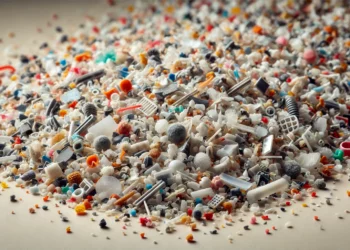
It was a discovery no one expected. In a routine dissection at the University of Birmingham Medical School, student researchers stumbled upon a rare and surprising anatomical anomaly— the donated human body had three penises. This finding marks only the second known instance of triphallia, a condition characterized by the presence of three distinct penile shafts.
A Triple Anomaly
The subject, a 78-year-old man whose body had been donated for medical research, appeared to have lived an ordinary life, likely unaware of his extraordinary anatomy. According to the team conducting the dissection, the man’s genitalia seemed entirely normal from an external perspective. Yet, hidden within the scrotal sac were two smaller penises, one of which was connected to the same urethra as the primary penis.
“These penile morphological abnormalities may not have been identified during his life. However, he may have lived with functional deficits due to the abnormal anatomy,” the researchers noted. Such deficits could include urinary tract infections, erectile dysfunction, or fertility issues, although the lack of significant symptoms suggests the condition may have gone unnoticed.

Triphallia, unlike the more documented diphallia, is so rare that only one other case has been reported in medical literature. That previous case, discovered in a newborn from Iraq in 2020, brought global attention to the notion of “supernumerary” penises. However, the Birmingham case is notable for being the first where the internal structure of the anomaly has been carefully studied through post-mortem dissection.
Supernumerary penises — meaning extra phalluses — occur in only about one in every 5 to 6 million live births. But even within this ultra-rare category, there are still surprises.
Understanding the Origins
The development of the male genitalia begins early in pregnancy, between four and seven weeks of gestation. During this early development, the penis forms from the genital tubercle, triggered by dihydrotestosterone (DHT), a potent androgen hormone. The authors of the study think a genetic abnormality likely disrupted this process in the 78-year-old patient, causing the genital tubercle to divide into three parts.
“The urethra originally developed in the secondary penis,” the researchers explained. “However, when this penis failed to develop fully, the urethra diverted its course and developed in the primary penis instead. The tertiary penis is a remnant of the triplicated genital tubercle.”
The genetic causes of conditions like diphallia and triphallia remain murky, though researchers have identified several genes involved in genital formation. One example is the sonic hedgehog gene, which is critical in guiding tissue growth during embryonic development.
While external penile duplication often leads to additional congenital issues and is typically corrected via surgery, this man’s condition was hidden. This could mean that internal penile duplications might be more common than previously thought. “Without any symptoms and additional medical needs, concealed internal penises may not present themselves, preventing diagnosis.”
Many individuals with internal penile duplication may never know they have the condition. This, the researchers argue, should prompt healthcare providers to consider the possibility of such anatomical anomalies in patients with urological symptoms.
As medical science continues to uncover rare and hidden conditions, it’s remarkable how much of the human body remains mysterious, even in individuals who live out their lives without knowing how special they truly are.
The findings were reported in the Journal of Medical Case Reports.






